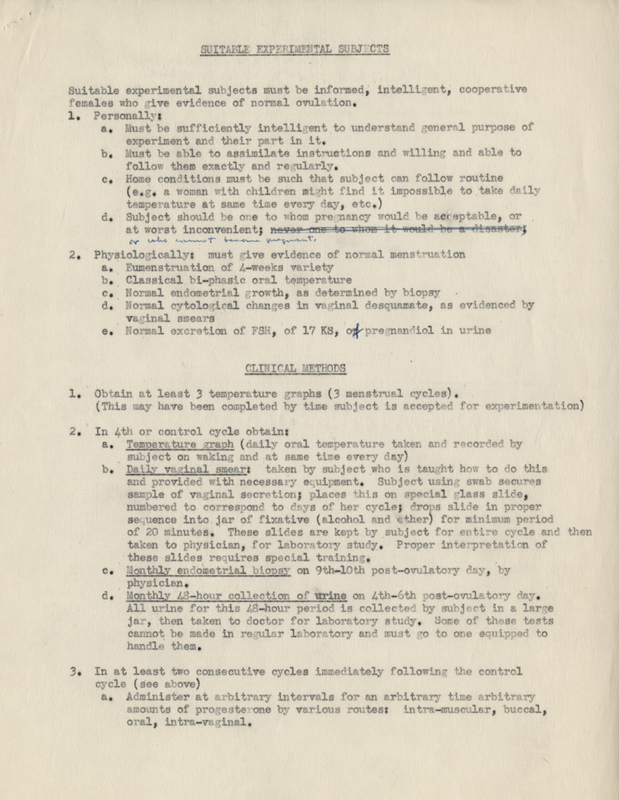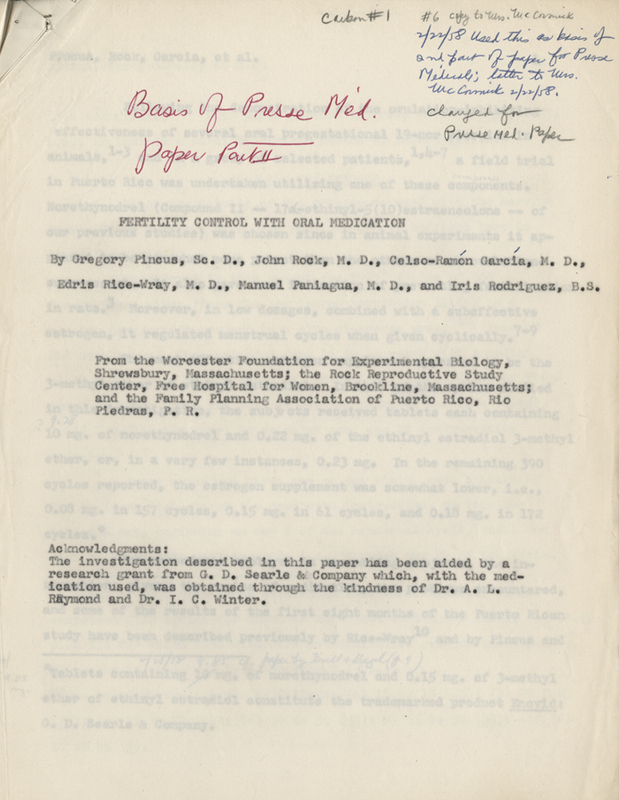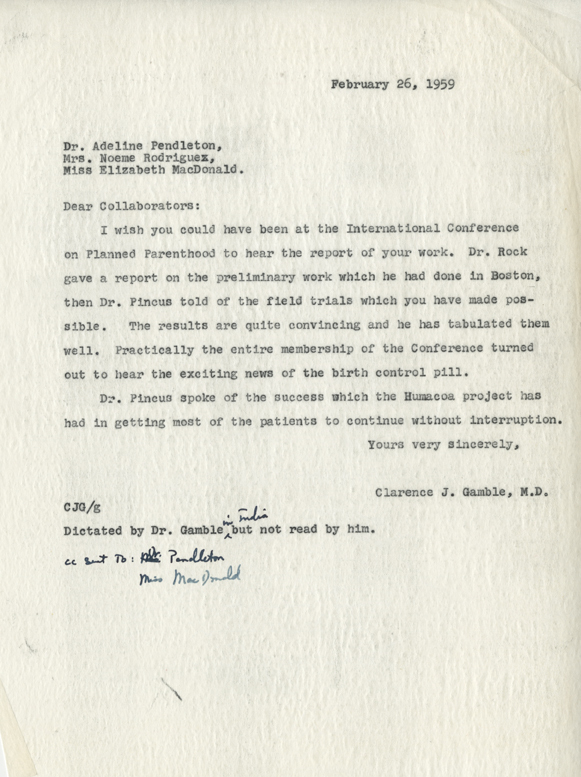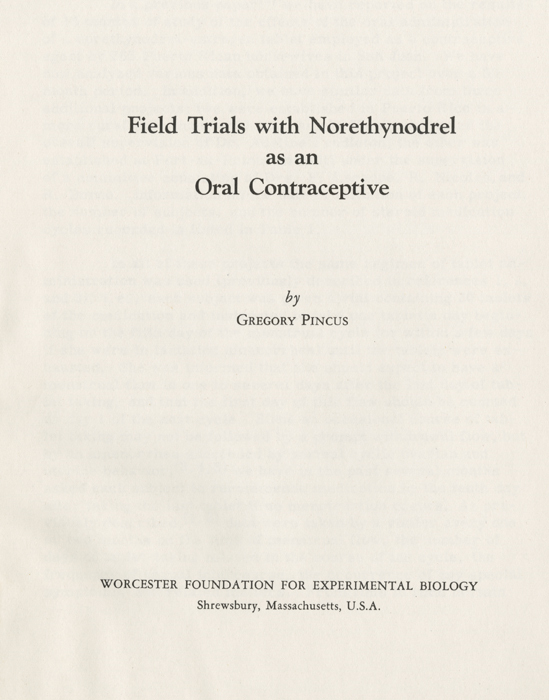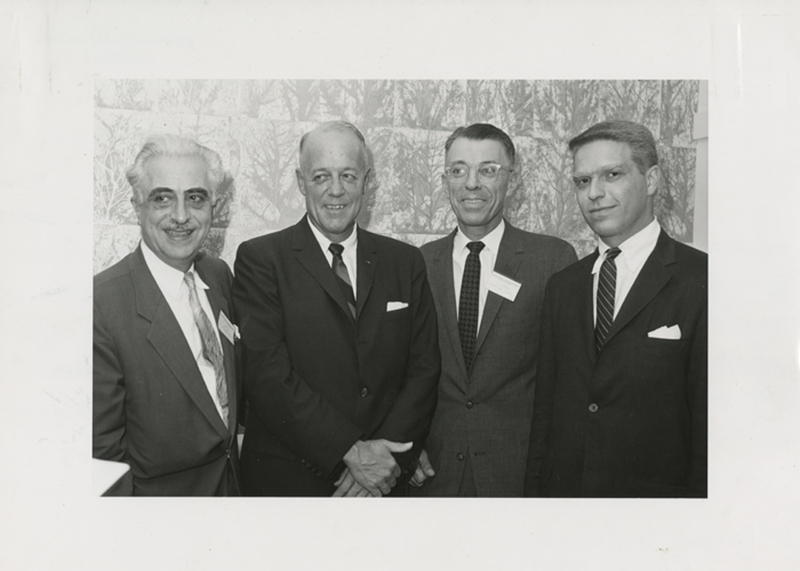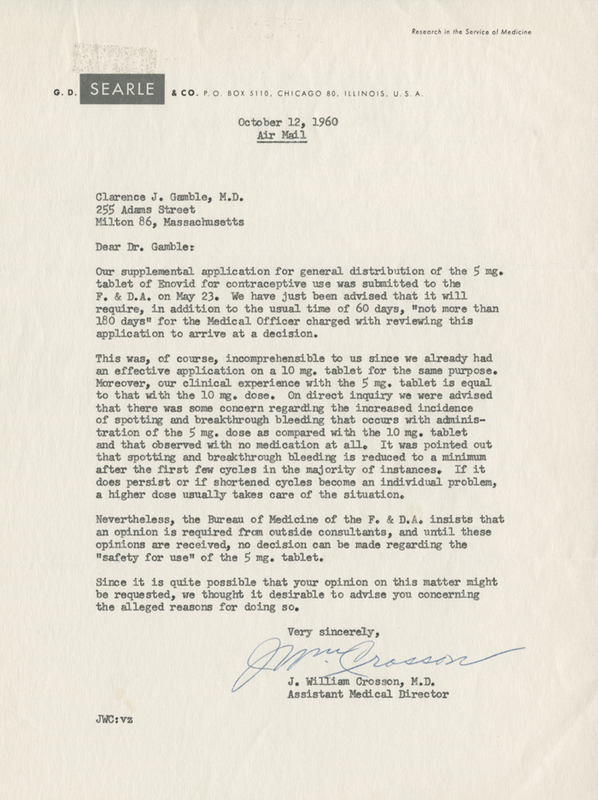Gregory Pincus and Enovid
Gregory Pincus had success testing a hormonal compound in animals; to pursue oral hormone contraceptive for humans, he needed an experienced clinician. Rock, who had used hormone treatments to successfully halt ovulation in his infertility patients in 1952, was his choice. The first field trials using the Searle-manufactured hormone were established in San Juan, Puerto Rico in 1956. Rock, Pincus, and Celso-Ramon Garica wrote the protocols for the study; Edris Rice-Wray was selected to manage the project on a daily basis. The field trials expanded over the years and involved additional sites in Puerto Rico and Haiti. Clarence J. Gamble, with his associate Adeline Pendleton Satterwaite, followed suit and formed trials in Puerto Rico based on the previous work of Rock, Pincus and Garcia.
“In a previous paper (1) we have reported on the results of 16 months of study of the effects of the oral administration of a norethynodrel-estrogen tablet employed as a contraceptive agent by 265 Puerto Rican housewives in San Juan. We have now analyzed various data obtained in this project over a 30 month period. In addition, we have similar data from three additional projects; two were established in Puerto Rico in a more rural area than San Juan, namely Humacao, under the overall supervision of Dr. Adeline Pendleton; the other was established at Port-au-Prince in Haiti under the supervision of a committee consisting of Drs. F. Laraque, R. Nicolas, and R. Borno. Information on the date of initiation of each project, the numbers of subjects, and the number of steroid medication cycles recorded is listed in Table 1.”
The pill was intensely scrutinized by the Food and Drug Administration. Results from these trials lead the FDA to approve the Enovid pill in 1957, but only for disorders of the female reproductive system. Searle would then seek the approval for the pill as a contraceptive, a non-therapeutic drug. The FDA launched an intense investigation and finally approved the 10mg Enovid pill for contraceptive use in 1960. This early brochure for the contraceptive Enovid was not for patient education, but for medical professionals only.

